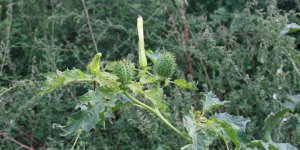| Health / Health News |
Human Heart Cells Grown on Spinach Leaves
Researchers say they’ve grown beating human heart cells on spinach leaves, using the vascular network of the plant to transport fluids. The finding could eventually lead to being able to grow working human cardiac tissue that could one day be used to replace heart cells damaged by heart attacks.
“Plants and animals exploit fundamentally different approaches to transporting fluids, chemicals, and macromolecules, yet there are surprising similarities in their vascular network structures,” said researchers from Worcester Polytechnic Institute (WPI), the University of Wisconsin-Madison, and Arkansas State University-Jonesboro. “The development of decellularized plants for scaffolding opens up the potential for a new branch of science that investigates the mimicry between plant and animal.”
The breakthrough is important because so far, bioengineering such as 3-D printing, can’t replicate the complex system of blood vessels in the human body that deliver the oxygen, nutrients, and essential molecules required for proper tissue growth.
For the experiment, researchers first stripped plant cells from spinach leaves and passed beads the size of human blood cells through the leftover vascular system and seeded the spinach veins with human cells that line our blood vessels.
“We have a lot more work to do, but so far this is very promising,” said Glenn Gaudette, PhD, professor of biomedical engineering at WPI and corresponding author of the paper. “Adapting abundant plants that farmers have been cultivating for thousands of years for use in tissue engineering could solve a host of problems limiting the field.”
Researchers added that other plants have been shown to offer the same kind of promise, including parsley, Artemesia annua (sweet wormwood), and peanut hairy roots.
“The spinach leaf might be better suited for a highly vascularized tissue, like cardiac tissue, whereas the cylindrical hollow structure of the stem of Impatiens capensis (jewelweed) might better suit an arterial graft. Conversely, the vascular columns of wood might be useful in bone engineering due to their relative strength and geometries,” the authors wrote.
Using plants could also be economical.
“By exploiting the benign chemistry of plant tissue scaffolds,” researchers wrote, “we could address the many limitations and high costs of synthetic, complex composite materials. Plants can be easily grown using good agricultural practices and under controlled environments. By combining environmentally-friendly plant tissue with perfusion-based decellularization, we have shown that there can be a sustainable solution for pre-vascularized tissue engineering scaffolds.”
The paper, “Crossing kingdoms: Using decelluralized plants as perfusable tissue engineering scaffolds” is published online in advance of the May 2017 issue of the journal Biomaterials. (VOA News)
YOU MAY ALSO LIKE






